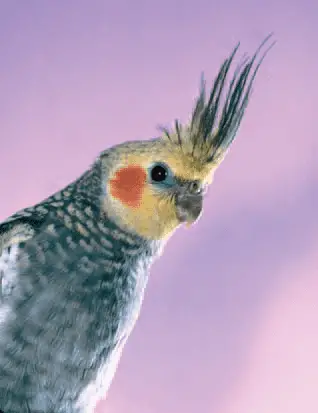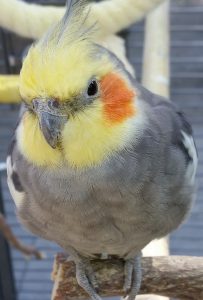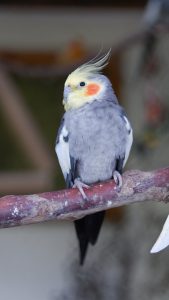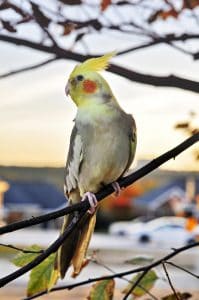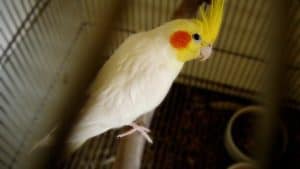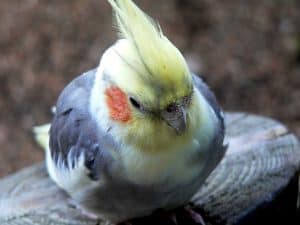Ever wondered what makes your cockatiel so uniquely agile and charming? Understanding “What Is the Avian Anatomy of Your Cockatiel” not only satisfies curiosity but also enhances the care you provide. These delightful birds, known for their vibrant personalities and striking features, possess a complex anatomy that enables their impressive abilities in flight and vocalization.
Diving into the specifics, I’ll explore the fascinating biological systems that allow your feathered friend to thrive. From their streamlined feathers to their robust respiratory system, each aspect of a cockatiel’s anatomy is a marvel of nature designed for survival and communication. Let’s embark on this journey to appreciate the intricate details that make your cockatiel truly remarkable.
What Is the Avian Anatomy of Your Cockatiel?
Cockatiels, like many psittacine birds, boast a complex avian anatomy that plays a critical role in their survival and functionality. They exhibit several distinguishing features typical of most birds, which aid in both flight and day-to-daily activities. Understanding the key components of their anatomy can provide insights into their health and behavior.
Respiratory System
Cockatiels possess a highly efficient avian respiratory system, which is markedly different from that of mammals. This system includes not only the lungs, but also air sacs which play a pivotal role in respiration. The bird’s body contains several air sacs, such as the cranial thoracic, caudal thoracic, and abdominal air sacs. These structures ensure that air continuously flows through the lungs in one direction, allowing the cockatiel to absorb oxygen both when inhaling and exhaling.
Skeletal System
The avian skeleton of a cockatiel is lightweight yet sturdy, designed specifically to facilitate flight. Among the most notable skeletal features are the long bones in the bird’s wings and legs, which are hollow to further minimize weight. Additionally, cockatiels, like most birds, have a fused clavicle, known as a furcula or “wishbone,” which acts as a spring to aid in wing movements.
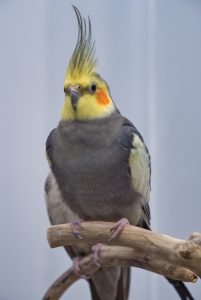
Digestive System
Cockatiels have a specialized digestive system that begins at the upper beak, designed to process a diverse diet primarily consisting of seeds and grains. They lack sweat glands and, therefore, don’t pass urine separately; instead, waste and uric acid are excreted together as liquid feces. This efficient system ensures quick digestion to sustain their high metabolism necessary for flight and energy.
Reproductive System
In female cockatiels, the reproductive tract mainly involves the left ovary and oviduct, as the right counterpart usually remains undeveloped. Males have two testes which increase in size during the breeding season. The anatomy of reproduction is vital for understanding breeding patterns, egg-laying, and overall health in pet birds like cockatiels.
Each of these systems are intricately connected and fine-tuned, showcasing the evolutionary adaptations that allow cockatiels to thrive both in the wild and in captivity.
External Anatomy
Continuing from the discussion on the diverse avian anatomy of cockatiels, I’ll now explore their external anatomy, focusing on both feathers and color patterns and the structure of their beak and claws. These elements are not only vital for their physiological functions but also for their interaction with the environment.
Feathers and Color Patterns
Cockatiels boast a unique set of feathers that play crucial roles in thermoregulation, flight, and camouflage. Their feather structure allows for an intricate balance between robustness for flight and lightness for thermal insulation. A typical cockatiel exhibits a variety dispersion of colors, most prominently gray, white, and yellow, which can vary widely due to genetic factors.
For instance, lutino cockatiels, a popular variant, display a striking yellow coloration, replacing the common gray with a vibrant yellow. This vibrant plumage doesn’t just protect them from elements but also plays a significant role in their social interactions and mating behaviors.
Beak and Claw Structure
The beak of a cockatiel is not just a feeding tool but a versatile organ used for foraging, climbing, and defense. The upper beak is curved and sharp, adept at cracking seeds, which constitutes the bulk of their diet. It’s essential for their survival in the wild, aiding in peeling fruits and manipulating objects.
Cockatiels’ claws are equally adaptive, designed for gripping and climbing. Sharpened and curved, these claws ensure that cockatiels can maneuver through their environment, whether it’s gripping a tree branch or navigating through foliage. These features highlight how evolution has shaped them to meet the demands of their habitats, ensuring they thrive in various settings.
By examining these specifics in the cockatiel’s external anatomy, I’ve outlined how each facet of their design serves multiple functions, from survival to social interaction.
Internal Anatomy
Diving deeper into the avian anatomy of your cockatiel, I’ll explore the intricate systems that operate beneath their charming exterior. Let’s examine their skeletal and muscular systems, which are fundamental for their survival and adaptability.
Skeletal System
Cockatiels, like most birds, possess a highly specialized skeletal system that is both lightweight and robust, enabling flight. Their skeletal structure includes several unique adaptations:
- Fused Bones: Many of the bones in a cockatiel’s skeleton are fused, particularly in the pelvic area and certain parts of the wings and skull. This fusion provides stability during flight.
- Hollow Bones: The bones are thin-walled with air spaces, significantly reducing weight while maintaining strength.
- Keel: A prominent sternum, known as the keel, serves as an anchor point where powerful flight muscles attach, facilitating powerful wing beats.
These features of the avian skeleton, such as the keel and hollow, fused bones, are essential for flight dynamics and overall agility.
Muscular System
The muscular system of cockatiels enables them to perform various physical activities, from swift flight to subtle head movements. Key characteristics of their muscular system include:
- Breast Muscles: The large pectoral muscles are responsible for the downward stroke of the wings, crucial for flight.
- Supracoracoideus Muscle: Located beneath the pectoral muscles, this muscle raises the wing during the upstroke, aiding in efficient and swift wing movements.
- Adjustability: Smaller muscles in the neck and legs help in food manipulation, balance, and precise movements, ensuring the cockatiel can interact with its environment effectively.
Understanding these internal structures helps explain how cockatiels manage complex movements and behaviors, from flying to feeding, with ease.
Key Physiological Systems
Building on my previous discussion of the intricate avian anatomy of cockatiels, I explore here the systemic anatomy vital for their survival, elaborating on the key physiological systems. These encompass respiratory, digestive, circulatory, and nervous systems, each tailored to the unique needs of these pet birds.
Respiratory System
The cockatiel’s respiratory system is highly specialized due to the unique structure of avian lungs and air sacs, distinguishing it from most birds. Cockatiels utilize a unidirectional airflow through their air sacs, allowing continuous and efficient oxygen absorption during both inhale and exhale phases. This system significantly boosts their ability to sustain high metabolic rates required during flight. The presence of abdominal air sacs further supports their respiration, letting them maintain buoyancy and ease of movement both in the air and on ground.
Digestive System
I find that the digestive system of cockatiels is adapted perfectly to their diet, primarily consisting of seeds, fruits, and occasional greens. Their gastrointestinal tract starts with the beak, designed to crack open seeds, and extends to a muscular stomach, or gizzard, which grinds the food with the help of ingested grit. The relatively short digestive tract reflects in their efficient digestion and rapid passing of feces, which comprise both solid and liquid waste in a single discharge.
Circulatory System
Cockatiels possess a robust circulatory system, characterized by a four-chambered heart that ensures a high rate of blood circulation necessary for flight. Blood vessels extend throughout the bird’s body, delivering oxygen and nutrients to tissues and removing carbon dioxide and waste products. The right jugular vein is notably prominent, often used for blood sampling in these birds.
Nervous System
The nervous system of cockatiels is intricate, with their large brain relative to their size enhancing high cognitive function and sensory perception. It governs everything from complex behaviors, such as singing and mimicry, to basic physiological functions. The spinal cord, protected by the vertebrae of their skeletal system, conducts nerve impulses to and from the brain to the rest of the body, facilitating an exceptional coordination between sensory inputs and motor responses.
In dissecting these systems, it’s clear how specialized structures of the cockatiel’s anatomy coalesce to support their active and interactive lifestyles, demonstrating evolutionary finesse that allows them to thrive both in the wild and as cherished companions.
Exploring the avian anatomy of your cockatiel reveals a fascinating blend of complexity and specialization. From their adept respiratory and circulatory systems to their robust skeletal and muscular frameworks these birds are marvelously equipped for survival and adaptation.
Understanding these anatomical features not only enhances our knowledge but also deepens our appreciation of these charming creatures. As pet owners or bird enthusiasts it’s crucial to recognize how this intricate anatomy supports their health and behavior ensuring we provide the best care for our feathered friends.
Frequently Asked Questions
What are the main anatomical features of cockatiels?
Cockatiels are distinguished by several key features: lightweight, hollow bones that aid in flight, specialized feathers for temperature control and flying, and a robust respiratory system that includes unique air sacs for efficient oxygen uptake, essential for high-energy flying activities.
How does the skeletal system of cockatiels support their flight?
The skeletal system of cockatiels is highly specialized, with hollow bones that reduce overall weight without sacrificing strength. This adaptation is crucial for flight efficiency and maneuverability in the air.
What adaptations aid cockatiels in their digestive process?
Cockatiels have a digestive system that is uniquely adapted to their primarily seed-based diet. It includes a specialized organ, the gizzard, which helps in grinding hard seeds, thereby facilitating digestion and nutrient absorption.
How does the respiratory system of cockatiels differ from other pets?
Cockatiels possess a complex respiratory system with air sacs that extend into their bones, allowing for a more efficient transfer of oxygen into the bloodstream. This system provides them with the high levels of oxygen needed for flight and active behavior.
What role does the circulatory system play in a cockatiel’s body?
The circulatory system of a cockatiel, featuring a four-chambered heart, is vital for maintaining robust blood flow during flight. This system effectively supports vigorous physical activity by ensuring efficient oxygen distribution throughout the body.
How do cockatiels use their nervous system to interact with their environment?
Cockatiels have a well-developed nervous system that supports high levels of intelligence and cognitive functions. This system enables them to learn, react to their environment, engage in complex social interactions, and exhibit various behaviors indicative of their emotional state.
Unsure about whether cockatiels can take showers and the best way to bathe them? This article is essential reading.
Curious about whether cockatiels like the dark? This article provides valuable insights.
If you’re aiming to bond more closely with your cockatiel, you might find helpful tips in the guide on how to get a cockatiel to sit on your finger.
Dealing with a biting cockatiel can be challenging, but there are effective strategies to manage this behavior. Learn more in this guide.
Ever wondered why cockatiels have crests? Discover the fascinating reasons behind this feature here.
